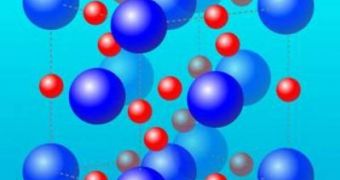According to a new scientific study, published in the latest issue of the journal Physical Review B, researchers at the Carnegie Institution, in Washington DC, have brought the goal of creating metallic hydrogen a step closer to reality, through continuous research. This chemical, which is the most common in the Universe, is known to become a powerful superconductor at very high pressures, but the experts recently managed to discover a compound that might lead directly to the development of the metallic hydrogen industry.
Quantum physics has long since argued that, because hydrogen is very simple in structure, and features a single proton and a single neutron, it could theoretically possess high levels of energy at very low temperatures. This idea seems to be supported by the fact that the element only solidifies from its gaseous form at 14 degrees above absolute zero (0 degrees Kelvin). According to a number of other theories, it should be possible to form solid hydrogen into metal, but the effort would require about four million atmospheres' worth of pressure, which is more than the pressure at the center of the Earth.
Therefore, it became obvious that producing solid hydrogen was not quite impossible, but extremely unlikely. As a result, chemists and physicists turned to various other chemicals, including silicon (Si). With such mixtures, it was determined that hydrogen became dense enough at more experimentally achievable pressures. In fact, a specific alloy, known by the chemical formula SiH4, requires only one tenth of the pressure pure hydrogen does in order to become solid. The compound also becomes superconducting at about one million atmospheres of pressure.
In the new journal study, CI researchers Timothy Strobel, Maddury Somayazulu, and Russell Hemley have shown that combining SiH4 with H2 at high pressures can result in a new compound – dubbed SiH4(H2)2 –, which has unusually weak hydrogen bounds. They then inferred that even higher pressures (but still achievable in the lab) could transform it into a metal. They will continue their investigations into the new compound, with the ultimate goal of creating forms of hydrogen that become solid and superconducting at relatively small pressures.

 14 DAY TRIAL //
14 DAY TRIAL //